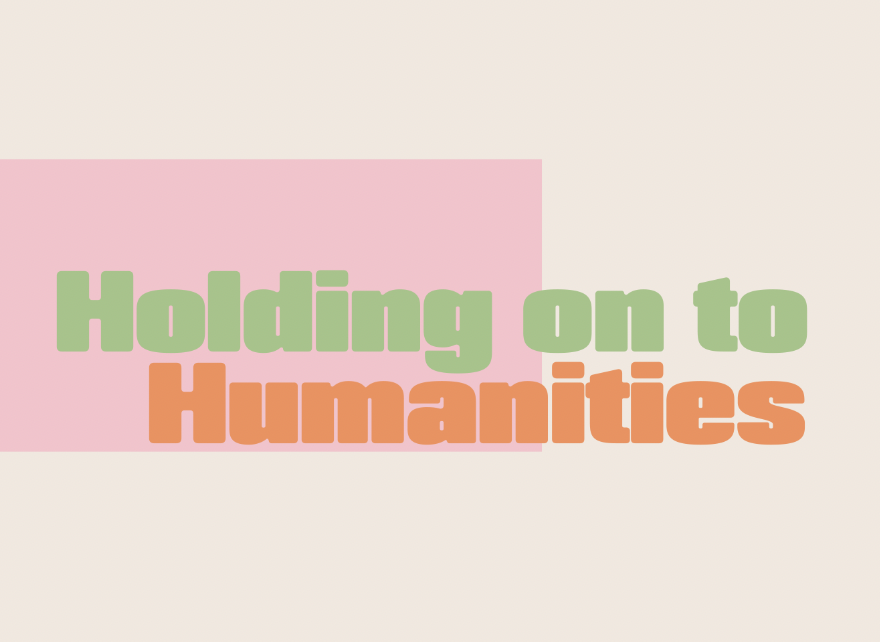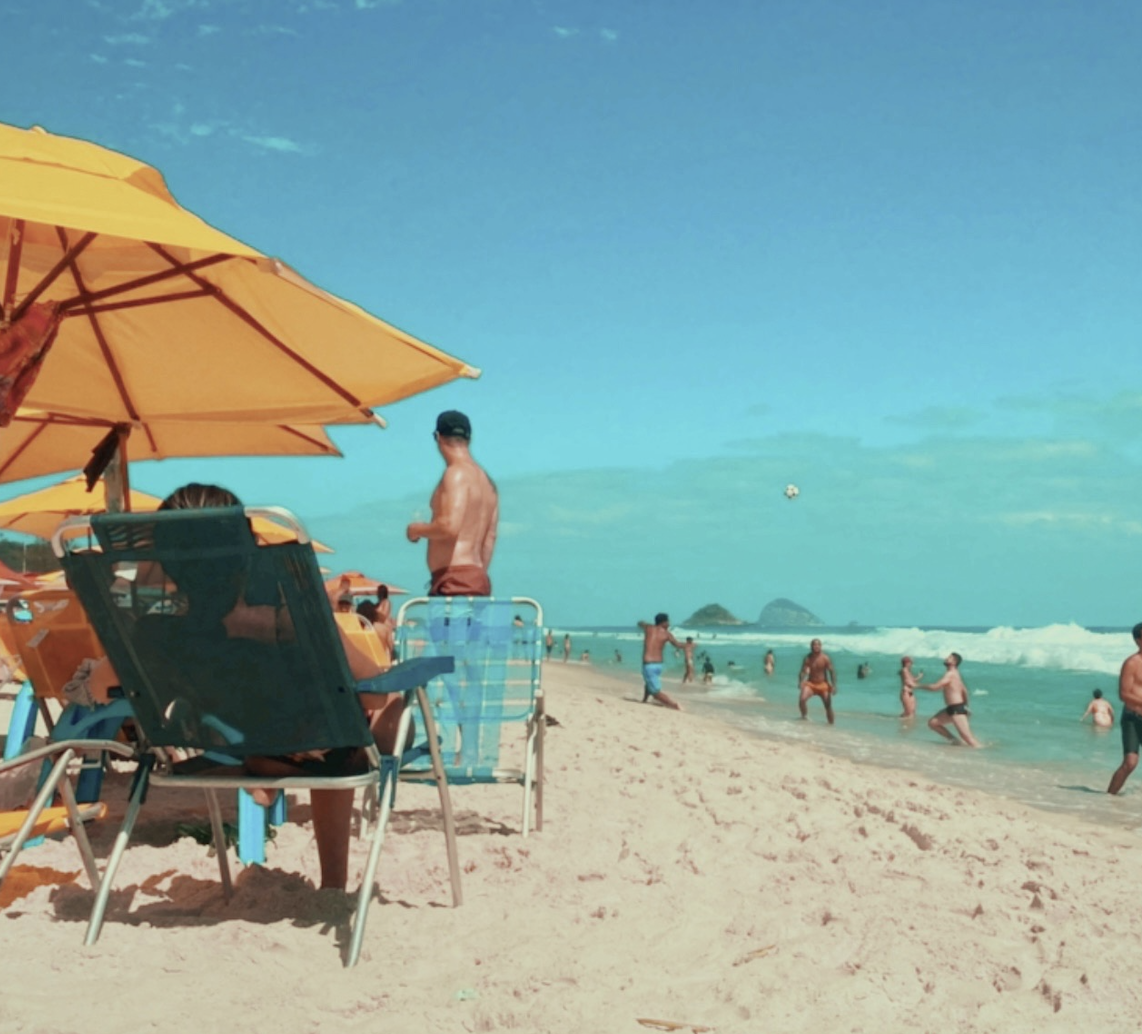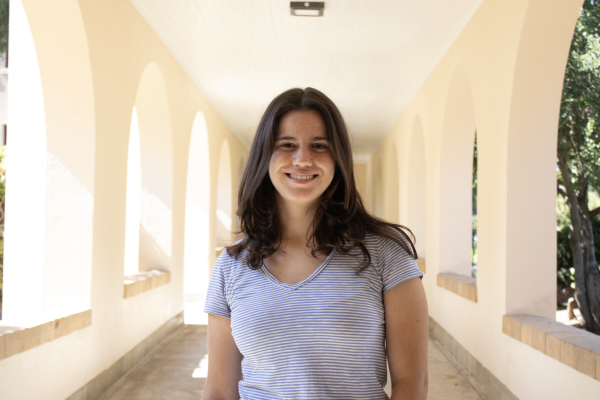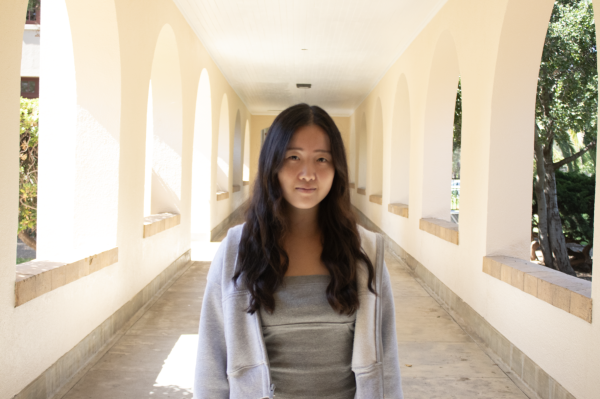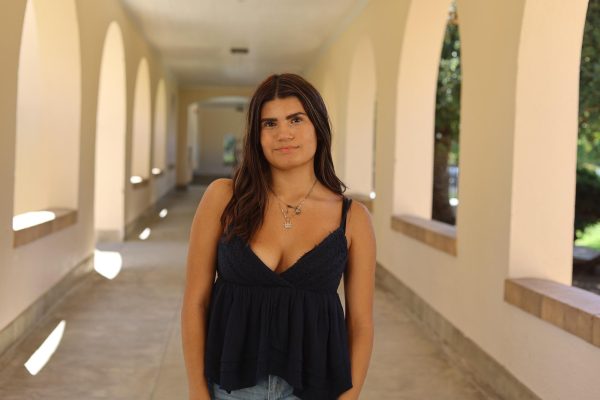For thousands of years, Indigenous nations and communities across the United States have maintained a deep connection to their homelands, which serve as the foundation of their daily lives, art, food and cultural traditions. But what happens when that land is taken, scarred or denied to those who cherish it the most?
Once pristine forests and plains have faced damage from Western colonial greed and expansion, forcing many Native American communities off of their ancestral homelands and onto reservations that lack environmental stability and resources, separating them from their families and cultural traditions. During these times, traditional cultural beliefs and practices were often actively discouraged, but the enduring bonds of Indigenous communities with their ancestral lands have continued to sustain them today.
As a Navajo, Paly senior Sariah Gilmore maintains a strong tie to her cultural homeland in the four corners area of Arizona, Utah, New Mexico and Colorado.
“The way that I connect with [my culture] is through my grandparents,” Sariah Gilmore said. “I usually go back to the reservation once a year, and hearing the stories and lessons from both of my grandparents really helps me connect with my culture and be really involved with issues concerning Native American issues that take place on the reservation.”
The name Navajo is a product of interpretation of a Pueblo word by Spanish explorers who encountered the Diné in the 1500s. Frankie Gilmore, Sariah’s grandfather, is a veteran, artist and former Navajo language teacher and school administrator. He believes that using the name Diné holds a deeper meaning than labels given by federal laws.
“I was always taught to introduce myself, of who I am, as a Diné,” Frankie Gilmore said. “Diné, meaning ‘the people,’ is the word that we use instead of Navajo, or whatever they want to call us. Look at the whole story of why we were called the Indian Nations — the United States government even has a law that says that we are to be called Indians, instead of the Diné or Navajo.”
In the 1860s, the U.S. army forcibly removed the Navajo people from their land by carrying out a scorched-earth campaign, burning their lands and livestock and imprisoning them on a 300-mile forced trek called the Long Walk. The Navajo people were interned under terrible conditions with poorly managed supplies on what was meant to be the first reservation west of the “Indian Territory.” According to a National Geographic photo essay by Dakota Mace, a Diné photographer, the Long Walk and forced exile endured by the Diné is a constant reminder of the struggle for the rights to their land.
“I tend to not like to say ‘reservation,’” Frankie Gilmore said.
After being forced to leave the land which had sustained their people for thousands of years, the Navajo people’s return and reunification with their ancestral land in 1868 was critical in regaining connection to the places that hold cultural significance and strength in their culture.
“One of the stories that really resonates with me is when [the Navajo] were released back to go back to the land,” Sariah Gilmore said. “Identifying the Four Sacred Mountains was really powerful, and that’s where this prayer comes from. There’s a prayer that was said to thank the land that came before and after them.”
The Navajo people established themselves as the sovereign Navajo Nation through the Treaty of 1868, where they worked to preserve their way of life. Despite regaining their ancestral land, the connection formed by living on that land was at risk of being destroyed. According to the National Museum of the American Indian, boarding schools operated by the U.S. government began forcibly taking Indigenous children from their families to attend schools where they were abused, forbidden from speaking their native languages and forced to assimilate into Western culture.
“In the [Treaty of 1868] that was with the Navajos and the United States government, there’s 13 articles within the treaty, and there is a part where it says, ‘We will train your children from here until the end of time,’” Frankie Gilmore said. “So they brought up all these boarding schools, and they started sending the younger kids.”
The story of being removed from Native culture and land impacted the childhoods of generations of Navajo. Frankie Gilmore’s own last name stems from one of his relatives’ time at a boarding school.
“They sent my grandpa’s brother to school,” Frankie Gilmore said. “They [his family] called him Little School Boy then, but when he came back, they had given him the name of Ralph Gilmore. When he went to that school, they said, ‘What’s your name?’ and he gave them a Navajo name. They said, ‘You can’t have that.’ They had a list of names alongside whoever was collecting the census of the Navajo people that were going to school, so he [the agent] just gave him a name right there. So that’s how we came up with the name Gilmore.”
Frankie Gilmore himself spent years of his childhood away from his family.
“My first day of school was at a government boarding school,” Frankie Gilmore said. “I grew up going to school in a place called Kayenta. It was a military style type of education where you got up at four in the morning, breakfast at five and school at six. I did that for six years. So if you look at my life from the time I was four years old, when I first went to the government boarding school, I was in the boarding school not living with my parents for six years.”
During his time at the boarding school, Frankie Gilmore was placed in an environment with crowded, unfavorable conditions.
“At the time, there were almost 1,000 kids that were from kindergarten all the way to sixth grade,” Frankie Gilmore said. “You were all clumped together. … There was a lot of bullying going on, and a lot of gangs were there.”
Summertime became a much-needed respite for the nine months of the year Frankie Gilmore was away from home. Each summer, Gilmore returned to spend time with his parents where he found solace in connecting with the Navajo land.
“When I want to hear peace, I don’t go to listen to the ocean,” Frankie Gilmore said. I can hear the wind, the soft wind and the little fluttering of the trees. You can hear the trees talking and swaying back and forth. You see those kinds of things. It gives me peace.”
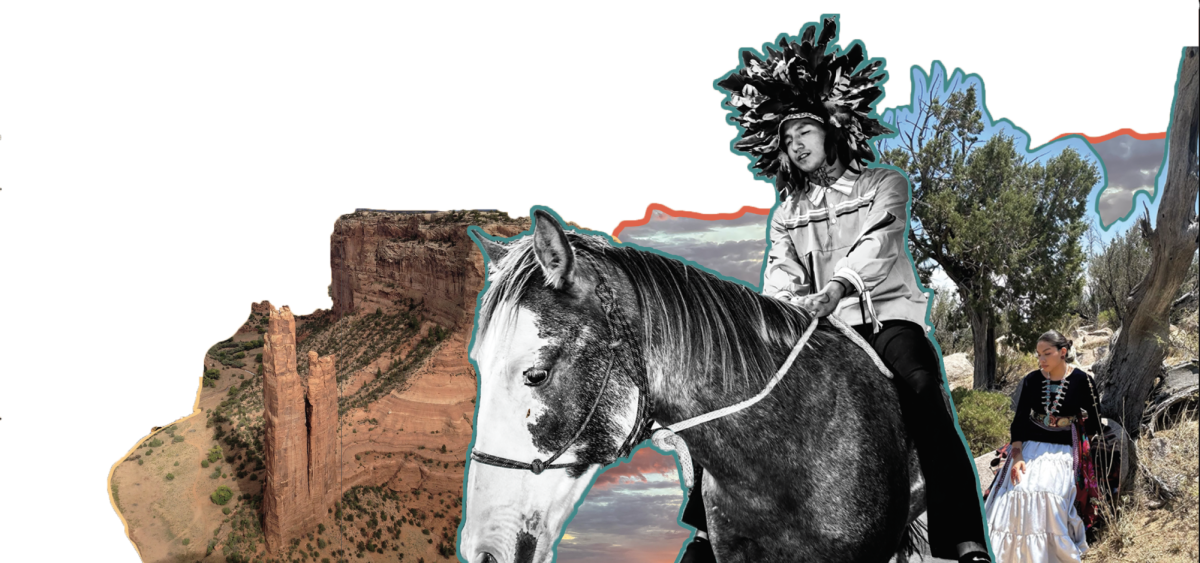
Frankie Gilmore learned the Diné language and traditions through his older family members who spent their lives immersed in Navajo culture and education.
“My father never went to school,” Frankie Gilmore said. “He never had one day of education, as far as the Western education goes. But in Navajo there is a lot of education that’s there. There’s so much that you learn: you see, you just don’t sit around and look at the birds and whatnot. There’s a lot of training involved.”
Through his family, Frankie Gilmore learned of the mindset of the Navajo people when interacting with the land, which is exemplified by the Navajo word “Hózhó.” Frankie Gilmore has passed that understanding down to his granddaughter Sariah.
“‘Hózhó’ means balance,” Sariah Gilmore said. “Everything has a connection. The moon and the sun are Hózhó, the different land aspects [are Hózhó]. Everything is just in balance.
The balance and beauty of Hózhó extends to all living things on planet earth.
“Everything is connected to Mother Earth, and you can’t live without Father Sky,” Frankie Gilmore said. “What the animals do helps the environment, what the Feather People do helps the environment, what the plants do helps the environment. We are all of those things, because how do we eat? Where does it come from? From the ground, and when we say the ground, that’s pretty sacred to us; when we say the ground that’s Mother Earth. She provides for us. She provides so much for us, the minerals that we take in. The process of the ecosystem of Mother Earth is powerful, and you can’t include that without Father Sky because he provides the air, the wind, the rain.”
The boarding school system disrupted the passing down of cultural knowledge through generations. However, Sariah Gilmore has found that visiting the reservation helps her to stay in touch with Navajo culture.
“Even if you go back to the reservation, there are many Native children that don’t know their culture fully, and they usually rely on elders [for cultural knowledge],” Sariah Gilmore said. “Then again, there’s that traumatic experience that they have that they don’t really share their culture anymore. I personally don’t know my own native language or a lot of aspects because of it, because of those boarding schools that came in place. Just going back and experiencing different things firsthand on the reservation really helps connect with that.”
Similarly, Paly math teacher Alexander Dade, a member of the Hidatsa tribe that resides on the Fort Berthold Reservation in North Dakota, learned more about Native culture through his family and a local tribe in Washington state, where he lived as a young child.
“Growing up, I never lived on the reservation, but my family, a lot of them, are still there,” Dade said. “My dad is the oldest of eight — most of his siblings are still there and we would go every summer for powwows and to visit.”
This upbringing has formed Dade’s perspective on living with the land.
“A big part of the cultural way of looking at the land is respect,” Dade said. “If you’re going to use the land, then you treat it well. After people hunted, they would use every part of the animal. You didn’t discard. There was a respect for the cycle of life, and the land is another part of that.”
The idea of being on equal terms with the land is seen in other Native nations as well. Frankie Gilmore keeps Hózhó in mind, conserving nature’s beauty rather than exploiting it.
“When you go to the mountain and someone is ill, you pick a plant that helps you get better,” Frankie Gilmore said. “But you never get the best plant. You never, even though it is the most beautiful flower up in the mountain, pick that flower. It’s the one that has the offspring that bring in the most beauty, so you don’t want to grab that one; you’ll take the next one, and then you offer something back, and you always say ‘Thank you for allowing me to take you.’”
This approach to using the land differs from the waste that runs rampant in mainstream American culture. Christopher Farina, a Paly Ethnic Studies teacher, attributes European settlers’ exploitation of ancestral lands to differing values.
“The European conception of land is that it should be thought of as property that you can possess, that you can own and that you use,” Farina said. “It could turn into a view that’s very extractive. It [land] becomes commercialized and feeds into a capitalist idea that we should treat this as a resource that we should be able to profit from as much as possible.”
This idea of viewing land as a commodity has carried over to modern-day society. Dade believes that this capitalist mindset is disrespectful towards the land from which Native nations such as the Hidatsa Nation come from.
“A lot of our [American] culture is centered around temporary possessions and consumption,” Dade said. “There’s not a lot of thought about where all that stuff comes from and treating that with respect. Everything from consumerism to the prominence of littering in America is something I personally take issue with. It’s a lack of respect for where we come from.”
The lack of consideration towards ancestral lands was exemplified in 2016, when the construction of the Dakota Access Pipeline, which would cut through Indigenous lands to transfer crude oil from North Dakota to Illinois, was announced. The potential desecration of cultural sites prompted multiple Native nations to advocate for the protection of their land.
“There were protests against this pipeline that was supposed to be built under a lot of the lakes and rivers in North Dakota, even near my tribe,” Dade said.
The Standing Rock Sioux, who were among many tribes whose land the pipeline would run through, fought back and sued the U.S. Army Corps of Engineers, who had jurisdiction over a portion of the pipeline. Eventually, construction of the pipeline was halted. However, when President Donald Trump came into office in Jan. 2017, he sped up the building process of the pipeline which was completed in April 2017.
“There’s a lot of oil on a lot of reservation land,” Dade said. “That’s something that people live with and in some ways coexist with. It does provide a lot of money for people, which is arguably beneficial, but you have to contrast that with the potential environmental damage.”
These pipelines lead to an increased risk of contaminating the water, soil, animal and plant life on Native land.
“The Keystone XL pipeline burst a few years ago,” Dade said. “That was the pipeline after which the Dakota Access Pipeline was modeled. The land is part of our life and the way that we all are. The land is considered sacred.”

Native resilience and activism against environmental harm form a crucial aspect of ensuring that ancestral land will be preserved for future generations. This protest can also be expressed through art. AP Art History teacher Sue La Fetra leads her class through a unit focused on Indigenous art forms, with some of the artwork pushing back against and exposing the injustice faced by Native communities.
“The Indigenous people have endured a lot from the United States, and so there are a lot of social justice aspects that go into the art,” La Fetra said. “There are pieces that show the Indigenous customs, but it also has some social justice things built into it, as far as meaning goes.”
The class curriculum explores the work of Jaune Quick-to-See Smith, a citizen of the Confederated Salish and Kootenai Nation.
“The piece that we study in class is called ‘Trade (Gifts for Trading Land with White People),’” La Fetra said. “The point of that piece is that from the white person’s perspective, they understand that they’ve traded the land that belongs to the Indigenous people for trinkets that the white people have given them.”
Smith mixes mediums and blends contemporary art with facets of Indigenous culture to bring a new perspective on how we view Native history in the United States.
“This [‘Trade’] is a great piece that has a canoe, which is a traditional means of transportation for the Indigenous people, but then they incorporate these modern things that bring up issues that were unfair to them as well,” La Fetra said.
As Native communities have found ways to maintain their identities through hardships, their connection to ancestral lands has been vital in strengthening their ties to their cultures.
“Life never ends,” Frankie Gilmore said. “What you give your kids and your grandkids will be passed on. So how do you treat Mother Earth? How you treat Mother Earth is very, very important. How you treat Father Sky is very, very important. When you live this life of balance and beauty, that’s called Hózhó.”
NoPlaceLikeHome


